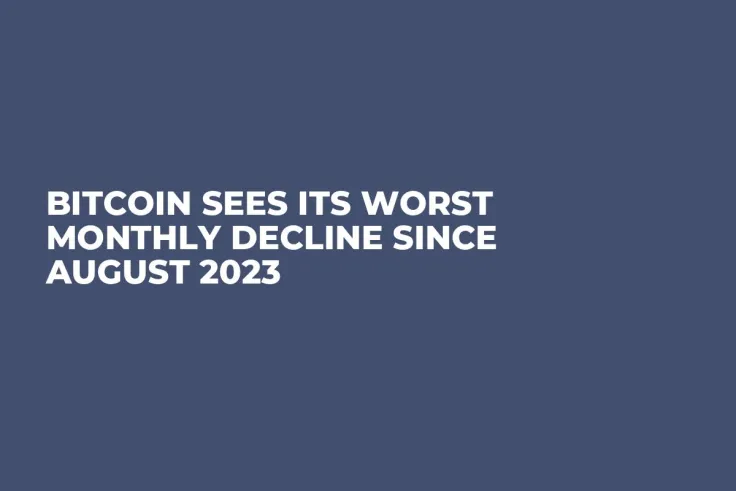
Disclaimer: The opinions expressed by our writers are their own and do not represent the views of U.Today. The financial and market information provided on U.Today is intended for informational purposes only. U.Today is not liable for any financial losses incurred while trading cryptocurrencies. Conduct your own research by contacting financial experts before making any investment decisions. We believe that all content is accurate as of the date of publication, but certain offers mentioned may no longer be available.
Bitcoin, the leading cryptocurrency, has just recorded its biggest monthly drop since August 2023.
The flagship cryptocurrency plunged as much as 15% in April, with macroeconomic concerns and slowing ETF flows becoming the main bearish headwinds.
Bitcoin's terrible performance in April came after the largest cryptocurrency recorded eight consecutive months in the green, matching its long-standing record from 2012.
The largest cryptocurrency is down another 6% over the past 24 hours, plunging to an intraday low of $57,068 on the Bitstamp exchange.
In the meantime, Bitcoin exchange-traded funds (ETFs) recorded another $161 million worth of outflows. Grayscale's GBTC alone lost $93.2 million.
Meanwhile, Hong Kong's hotly anticipated cryptocurrency ETFs failed to live up to some bullish expectations. However, some Bitcoin evangelists still claimed that the launch was relatively successful given the small size of Hong Kong's ETF market.
Notably, the "Fear and Greed" index has now dropped back to the "Neutral" level after the dramatic Bitcoin price crash. Prior to that, the index was alternating between "Greed" and "Extreme Greed." Some analysts believe that the market needs to cool down before another push higher. However, some technical indicators recently signaled that a larger correction could be on the cards.
Bitcoin is down as much as 14% over the past week alone. The cryptocurrency is also down more than 20% from its all-time high of $73,737, which means that it has technically entered a bear market.
Investor concerns about the US Federal Reserve postponing rate cuts due to stagnation fears appear to be the main bearish factor.

 Dan Burgin
Dan Burgin Vladislav Sopov
Vladislav Sopov U.Today Editorial Team
U.Today Editorial Team